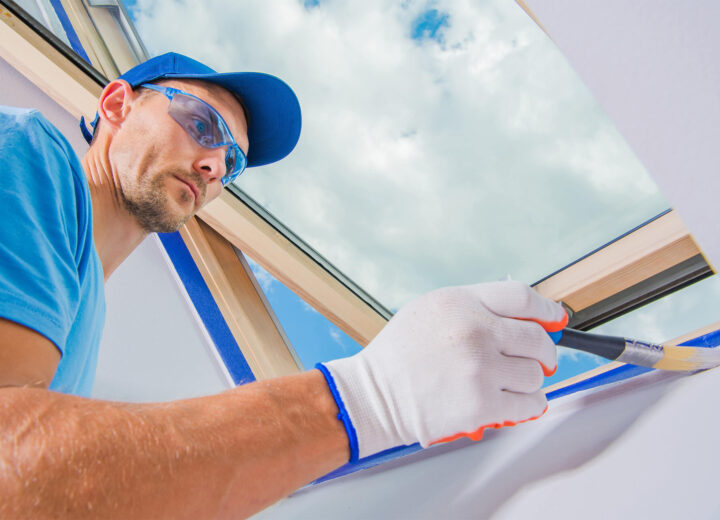When you invest the time and money in a great paint job, the last thing you want to worry about is your fresh exterior paint failing soon after it is applied. There are a few things you can do to ensure your paint work remains in great condition for years to come, and today we’re going to share some of our top professional painting secrets with you.
Use the right tools
Different exterior finish materials require different brushes and rollers to ensure paint spreads and adheres evenly to the surface. Synthetic bristle brushes are great for applying latex paint, but rollers might work better on uneven surfaces like stucco and brick. The trouble is, combining different exterior materials with different types of paint can lead to a lot of confusion when you are trying to select brushes or roller covers at the home improvement store. This is one area where consulting with a professional house painter can save you plenty of time and money, but more importantly help stop your exterior paint failing.
Whatever the weather
One of the most challenging variables for house painters to combat is the uncertainty of the weather. While it is fairly common knowledge that painting in the rain is a bad idea, there are a few other weather conditions that lead to less than excellent results from your paint job. In general these are great guidelines for keeping your exterior paint from failing due to weather conditions:
- Use caution when painting in direct sunlight, the heat causes paint to dry fast and makes undesirable lap marks inevitable, it can also cause blistering and peeling;
- Use caution when painting in windy conditions, again this causes the paint to dry faster than you anticipate – it can also lead to unnecessary cleanup due to over spray and splatter, as well as debris adhering to the paint work; and,
- Do not paint when it is below 50 degrees Fahrenheit, unless you are using paint products specifically formulated for cold-weather application.
Follow procedure
Professional house painters know that there is an order to the tasks – no one just runs around a building slapping paint on with a brush if they want a professional finish for their building’s exterior. Part of following the appropriate procedure for a great exterior paint finish is making a solid plan of attack for the job, in general the plan should follow these steps in order:
- Assess the site – making note of any mixed materials on the building exterior that might require specialized paint products
- Itemize supplies – make a shopping list detailing the paint, tools and other products you will need
- Do the prep work – including scraping away peeling or blistered paint, sanding surfaces that need it and putting up protective coverings over areas you don’t want painted
- Paint – apply the appropriate number of coats of paint to the surfaces, allowing adequate drying time between them.
- Clean up – remove all the protective coverings you installed, clear away all the debris from the job, clean up any splatter or spills that may have inadvertently happened along the way.
- Disposal – one of the most frequently overlooked parts of the paint job is disposing of or storing the leftover paint. Be sure you have a place for all those buckets to be stored, or know where to properly disposed of.
You are probably noticing that the actual painting is the shortest part of this task. You can really save yourself a lot of trouble by working with a team of professionals to prevent exterior paint failing on your next project.






